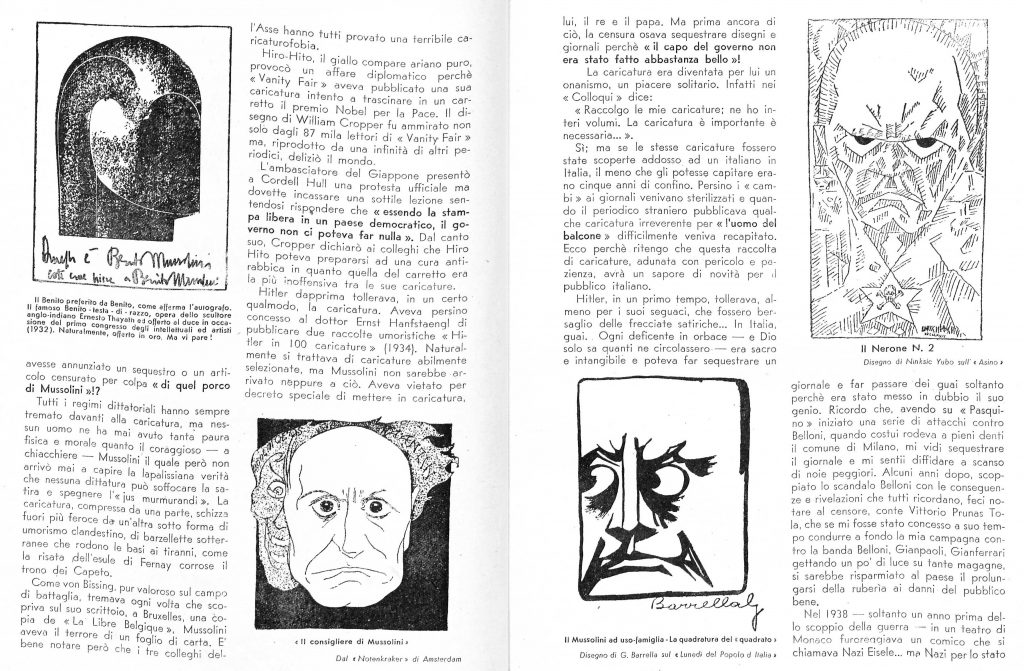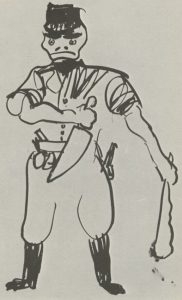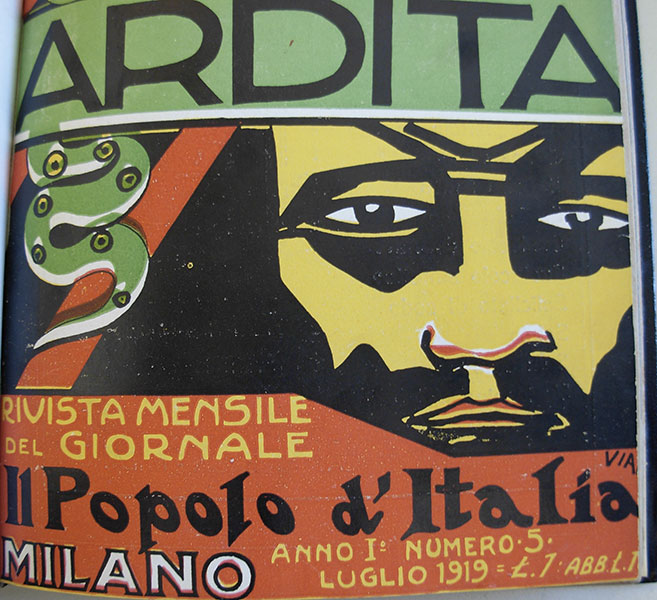I’m pleased to announce the release of the new issue of the journal Emotions: History, Culture, Society, which includes my article Anger as Misshapen Fear: Fascism, Literature, and the Emotional Body. 
Category Archives: Historical Figures
Socialising anger. Fascism and emotions
Last June 22nd I participated in the Literature and Social Emotions Conference at the University of Bristol. I presented a paper titled Socialising Anger. Literary Representations of Emotional Communities under Fascism, which is a development of the research I first presented one year ago and will result in a broader scrutiny on the representation of emotions in fascism-related Italian literature. What follows is the text of the Bristol’s paper.
1.
Italian fascism pursued strict management of public feelings. It aimed at a wide and deep control of human thoughts and experiences. That is to say, it built what William Reddy defines an ‘emotional regime’; it established a set of practices which inculcated normative emotions, like enthusiasm, exaggerated optimism, national pride. Nevertheless, the euphoric feelings displayed in public represent just one of the emotional layers of fascist Italy. Despite the appearance of unanimous acceptance, fascism largely derived consensus from violence and intimidation. As denounced by Carlo Emilio Gadda in the very first lines of his anti-fascist satire Eros e Priapo, written in 1944-1945.
Collective and individual consciousness, threatened by the knife, the truncheon, the torture; and silenced by prisons, extorsions, vetos against free expression; it was concealed in a hidden, invisible lagoon of history, beyond hate and dullness, and belonged to the refugees, the persecuted, the prisoners, the humiliated, children of deportees and executed to death.
Along with material and physical coercion, fascism caused the emotional suffering of part of the population. Gadda sketches the existence of what Reddy would call an ‘emotional refuge’, a cluster of social conditions and related practices diverging from the emotional regime.

Windows of the soul: caricature and physiognomy
Wednesday 28 February I was at Warwick University as an invited speaker within the research seminar series of the School of Modern Languages and Cultures. I publish here an excerpt of my talk, summarising the main point I tried to make and discussing some example of literary caricatures. Here the uncut version.
With this talk, I aim at clarifying the mutual enhancement of caricature and physiognomy. As Martin Porter puts it, physiognomy is a form of “natural magic”, a language in which all aspects of human appearance are natural “windows of the soul”. Physiognomy is assessed as “magic” and archaeological knowledge for the modern epistemology deprived it of recognised scientific reliability. Still, it has been a long-standing and pervading presence in Western Culture. Over time, it has registered the multiple and diverse attempts to connect what is visible of the human body to what is invisible and concerns the soul and the mind; to establish a relationship between the outside and the inside; to find homologies between superficial lines and deep forces, physical outlines and moral attitudes.

Lithographic drawings illustrative of the relation between the human physiognomy and that of the brute creation / From designs by Charles Le Brun. Wellcome Collection.
Anger as misshapen fear: fascism and the emotional body
What follows is the text of the paper I gave the 20 June 2017 at the International Conference «Fears and Angers. Historical and Contemporary Perspectives», Queen Mary University, 19-20 June 2017.
Probably Federico Fellini’s Oscar-winning movie, Amarcord, released in 1973, perfectly defines what was supposed to be the, as William Reddy would say, «emotional regime» of fascism. Enthusiasm, faith, happiness, and veneration for the Chief were the dominant public feelings endorsed by fascism. But, despite the public ceremonies being widely, and often sincerely, officiated by Italian people, fascism largely derived consensus from violence and intimidation.

Giacomo Manzù, Black Brigadist, 1943
Breaking news! Media and caricature in Bontempelli’s literature
I just published the essay “Edizione straordinaria! Bontempelli e la cognizione della Grande Guerra”, within the volume Dal nemico alla coralità. Immagini ed esperienze dell’altro nelle rappresentazioni della guerra degli ultimi cento anni, edited by Alessandro Baldacci (Firenze: LoGisma, 2017).
The essay analyses two novels by the Italian writer Massimo Bontempelli, La vita intensa (1920) and La vita operosa (1921). I look at how these literary texts represent the «intense life» of the post-WWI metropolis, in whose spaces an analogy is established between the violence of war and the violence of peacetime dominated by the semiotic aggressiveness of modernity. Particularly, the psychic pressure of war seems to be extended by the pressure of the media system, which in those years was sky-rocketing and becoming increasingly complex and widespread.
Bontempelli’s two experimental novels are first published serially in two different magazines: «Ardita», a graphically dynamic and modern magazine issued monthly with the newspaper «Il Popolo d’Italia», in the case of La vita intensa.

«Ardita»’s cover designed by the artist Lorenzo Viani
«Industrie Italiane Illustrate», a journal funded by industrial companies, in the case of La vita operosa, which interestingly is a novel that largely satirises the way capitalism affects the human existence at the point that even bodies and minds are shaped by its force.

Marino: a cosmic self-portrait

Frans Pourbus the Younger, Portrait of Giovanni Battista Marino, 1619, Detroit Institute of Arts. Source: Wikimedia Commons, public domain.
In his sonnet Sul proprio ritratto (di mano di Bartolomeo Schidoni) – published in 1620 within La Galeria, a collection of poems conceived as descriptions of, and dialogues with, figurative artworks – Giovan Battista Marino suggests that to depict his portrait a painter should employ the harshness of ice and fire, the terror of the shaded dark of night, the paleness of death, the imperfection of nature, and colours sharpened with whispers and tears. Continue reading
Manzoni: grimaces of power
In chapter XIII of Alessandro Manzoni’s I promessi sposi, Renzo, one of the two betrothed, is involved in a riot in Milan, where people, exasperated by food shortage, start assaulting the bakeries. To placate the rioters and rescue an official who risks being lynched by the crowd, the Chancellor Antonio Ferrer is forced to intervene. Manzoni represents in his portrait all the hypocrisy and duplicity of power embodied by Ferrer. While cutting through the raging crowd with his wagon, Ferrer shows a hyperbolically smiling face, «a countenance that was all humility, smiles, and affection». He also tries to enhance his intervention with gestures, «now putting his hands to his lips to kiss them, then splaying them out and distributing the kisses to right and left». Ferrer pronounces the empty keywords that are supposed to please the crowd: bread, plenty, justice. But at the end, overwhelmed by the pressure of voices, faces, and bodies surrounding his vehicle, he draws in, puffs out his cheeks, gives off a great sigh, and shows a completely different expression of intolerance and impatience. Continue reading
Michelangelo: a self-caricature
Caricature misshapes the masks that society applies to the human face. This is why artists use deformation to build self-representations that contradict the social stereotypes of self-fashioning. In one of his poems, Michelangelo Buonarroti portrays his physical and psychological dejection creating a proper self-caricature: bluish coloured eyes, rotten teeth, a face that is fit to terrify, damaged clothes, injured ears and laboured breathing. The self-caricature involves not just the body of the artist, but also his own work of art: his writings become valueless scribblings, and his sculptures are seen as useless rag-dolls. Continue reading
The cognition of Priapus. Gadda and caricature
Is out my last essay, The Cognition of Priapus. Caricature procedures in Carlo Emilio Gadda’s Eros e Priapo. Here it is available the English abstract, while here you can find the whole essay in Italian.
I extract from the essay three different caricatural descriptions of Benito Mussolini provided by Gadda in his controversial pamphlet Eros e Priapo, written between 1944 and 1945. In the first, Gadda portraits the image of Mussolini speaking from the sadly well-known balcony:
Di colassù i berci, i grugniti, i sussulti priapeschi, lo strabuzzar d’occhî e le levate di ceffo d’una tracotanza priapesca: dopo la esibizione del dittatorio mento e del ventre, dopo lo sporgimento di quel suo prolassato e incinturato ventrone, dopo il dondolamento, in sui tacchi, e ginocchî, di quel culone suo goffo e inappetibile a chicchessia, ecco ecco ecco eja eja eja il glorioso, il virile manustupro: e la consecutiva maschia polluzione alla facciazza del «pòppolo».
